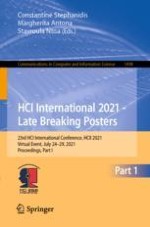2021 | OriginalPaper | Chapter
Alleviate the Cybersickness in VR Teleoperation by Constructing the Reference Space in the Human-Machine Interface
Authors : Weiwei Jia, Xiaoling Li, Yueyang Shi, Shuai Zheng, Long Wang, Zhangyi Chen, Lixia Zhang
Published in: HCI International 2021 - Late Breaking Posters
Publisher: Springer International Publishing
Activate our intelligent search to find suitable subject content or patents.
Select sections of text to find matching patents with Artificial Intelligence. powered by
Select sections of text to find additional relevant content using AI-assisted search. powered by
